What to do with scraps and leftovers, plus four pesto recipes from The Less Waste, No Fuss Kitchen Cookbook
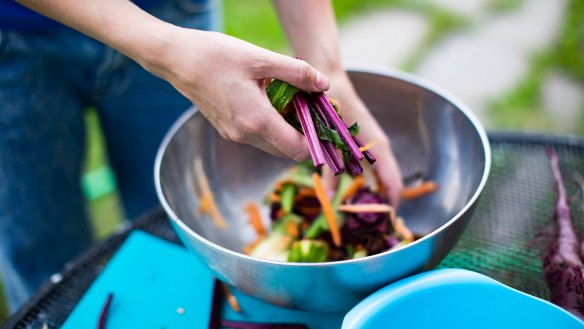
- Hate leftovers? 10 tips to make yesterday's meals more exciting today
- Adam Liaw's six step process to help plan your meals, waste less food and cook more
In The Less Waste, No Fuss Cookbook, zero-waste author and educator Lindsay Miles shares simple steps to shop, cook and eat sustainably in an approachable way that works for you.
Chapters give practical advice on how to be more environmentally friendly in the kitchen, from how to eliminate plastic from your life to keeping leftovers out of landfill, plus recipes to make the most of the ingredients you buy, all without the guilt that often comes along with trying to live a greener lifestyle.
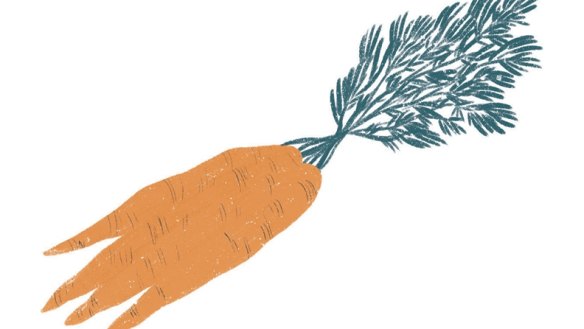
"Too often when we read about reducing our footprint, we come across 'should' and 'should not' statements. Not in this book," Miles says.
"Its purpose is to give you ideas and tools to make changes and feel positive about the things you can do, not guilty about those things you can't."
Here are some of Miles' simple ways to get started by using up scraps and leftovers you might usually throw straight in the bin.
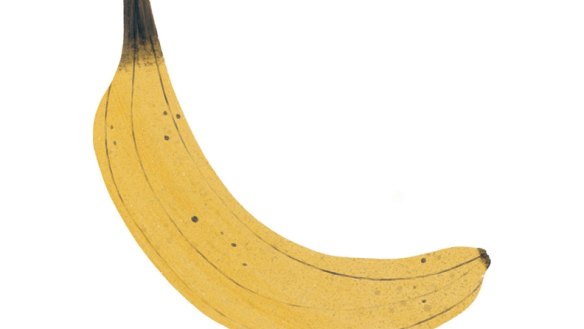
What do I do with: 'sad' food?
Black bananas
Use to make banana bread or add to smoothies. They also freeze well, either in their skins or peeled and placed in a suitable container. Blending frozen bananas with peanut butter makes a delicious soft-serve ice-cream.
Dry bread
Freeze bread that's no longer fresh, and use for toast (you can toast bread straight from the freezer). Dry or stale bread can be used to make breadcrumbs: dry out in the oven, whizz in a blender or crush in a pestle and mortar, then store in the pantry or freeze. Dry baguettes can be used to make easy crackers that will keep for a few months in an airtight container.
Limp greens
Chop until fine and add to stews, dal or sauces. They will reduce and you won't notice them. Alternatively, make a batch of pesto. Strong leafy greens such as rocket can be used on their own; mix mild greens such as lettuce with a strong-flavoured herb such as basil to give your pesto flavour.
Mouldy cheese
It's actually safe to cut mould off hard cheese. If you notice white spots on your cheese it may not be mould at all but calcium lactate, a salt that is completely harmless (it's common on cheddar and colby).
Separated yoghurt
It's common for the curds (solid) and whey (liquid) to separate in yoghurt, but this doesn't mean it's bad. Draining the whey is how Greek yoghurt and labne cheese are made. Either stir the yoghurt to recombine, or drain off the whey (the yoghurt will be thicker).
Sour milk
This can be used in baking as a substitute for buttermilk; the acidity actually improves the flavour of some baked goods. (The souring is not caused by food poisoning bacteria, so it is safe to consume.)
Wrinkly/old fruit
Chop and simmer on the stove in a small amount of water to make stewed fruit (add sugar and spices as needed: cinnamon and ginger are both delicious) and stir through porridge or yoghurt. Stewed fruit can also be frozen. Alternatively, slice the fruit, cover with crumble topping and bake in the oven.
Wrinkly vegetables
Wilting is caused by water loss, so make the most of this and roast your bendy vegies. Drizzle carrots, capsicum, zucchini and tomatoes with oil and pop in the oven on a high temperature to bring out the flavour. Roasted vegetables freeze really well.
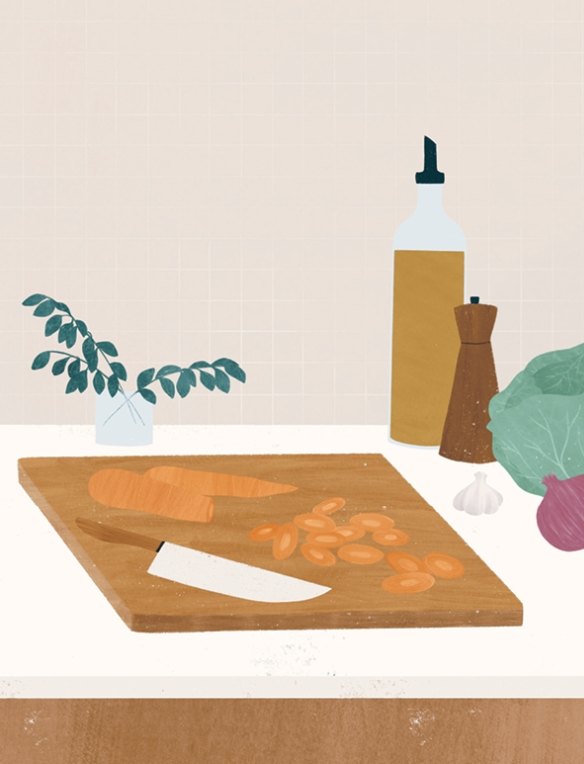
What do I do with: leftovers?
Pasta
Cover with a fresh batch of sauce and bake, add to tomato-based soups, or stir some pesto through for an easy snack.
Rice
Cold rice works really well in stir-fries: add to the wok when the vegetables are cooked and stir through. Or combine with cooked lentils and heaps of fresh herbs to make a simple rice salad. Rice freezes well.
Protein
Stir-fry with a selection of fresh vegetables; or add to sauces, soups or salads to fill them out.
Vegetables
Add to salads, sauces, stir-fries or stews, or eat as a snack.
Sauces
Add to a stew or soup, or bulk out with some new vegetables and protein to make sauce version 2.0.
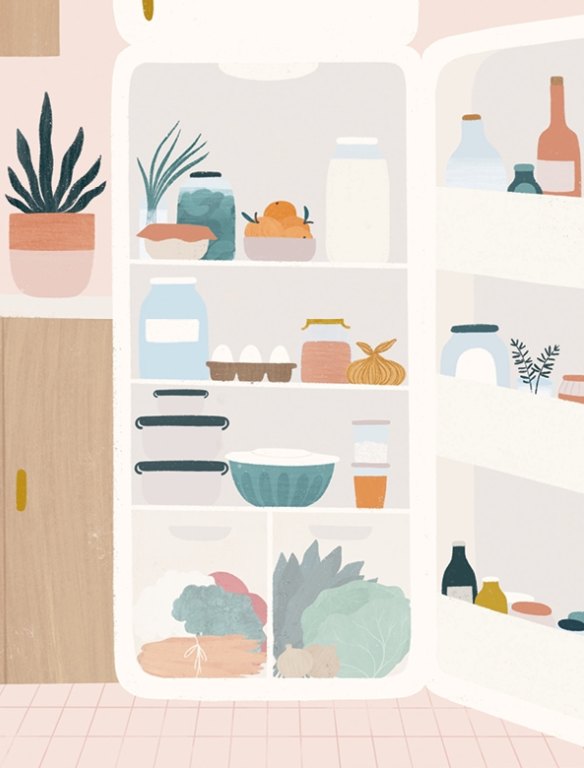
What do I do with: 'scraps'?
Beetroot leaves
Can be used in the same way as other leafy greens: add to sauces or stews, or stir-fry. Young beetroot leaves can be used in salads. They have a slightly salty taste.
Broccoli stems and leaves
Both edible and delicious. If the stalk is tough, cut the outer skin off and use the softer middle. Chop and use as you would use broccoli.
Citrus rind
The coloured part of the rind is bursting with flavour. Peel the fruit with a sharp knife or peeler, and either dry or freeze in strips, or finely chop and freeze. Can be used in baking, and to flavour rice, stews and salads.
Pumpkin seeds
These tasty morsels are too good for the bin. When preparing pumpkin, put the seeds and stringy insides in a bowl of water and agitate to loosen the seeds. Spread over a baking tray and dry in the oven (pop in a hot but turned-off oven once you've finished cooking). The white husk can be eaten, or split open with your teeth to find the green pumpkin seed inside.
Vegetable peels
Rather than peeling your root vegetables, scrub well instead.
If you prefer to peel your vegetables (or need to for a particular recipe), toss the peels in some olive oil, lay out on a baking tray and cook in the oven for 10-15 minutes on medium temperature until crispy. Fresh vegetable chips! Carrot and potato peels work particularly well.
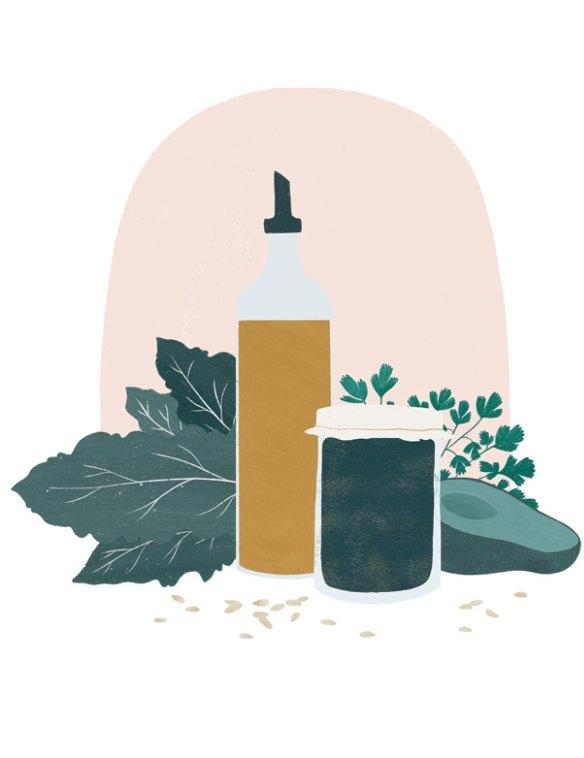
Pesto four ways
The word pesto comes from the Italian word pestare, which means "to pound, or crush". It is a great way to use up leafy greens: basil, rocket, carrot tops, parsley, coriander, kale, spinach, nasturtium leaves or whatever we find in the fridge (or the garden). Limp leaves make fine pesto.
My formula for pesto is greens, garlic, nuts or seeds, oil and sometimes lemon juice or apple cider vinegar. I don't use cheese: if I want a cheesy flavour, I add nutritional yeast flakes purchased from the bulk store.
Pesto whizzes up quickly in a food processor, but a pestle and mortar will also work. These recipes make one jar of pesto, but you can easily double them (I often do): it's the same amount of washing up, and pesto freezes well so you can save half for a quick meal another day. Any pesto you are not eating or freezing straightaway will keep in a glass jar in the fridge for 5 days.
Parsley and walnut pesto
I often make this in the colder months when basil isn't available for traditional summer pesto. Basil leaves bruise easily and darken, but this parsley pesto stays a brilliant bright green.
- 3 garlic cloves
- 3 large handfuls flat-leaf parsley
- 100g (1 cup) walnuts
- 250ml (1 cup) olive oil
- 3 tablespoons nutritional yeast
Chop the garlic, then blend with the parsley to make a paste. Add the walnuts and blend again, then mix in the oil until combined. Finally, stir in the nutritional yeast.
Nasturtium and almond pesto
Nasturtium leaves are peppery, and can be switched out for rocket or another fiery leaf. If it's too strong, consider swapping half of the nasturtium for a mild green leaf such as spinach.
- 1-2 garlic cloves
- 3 large handfuls nasturtium leaves
- 80g (½ cup) almonds
- 250ml (1 cup) olive oil
- juice of 1 lemon
Chop the garlic, then blend with the nasturtium leaves to make a paste. Add the almonds, blend again, then mix in the oil and lemon juice until combined.
Carrot tops pesto
I often use avocado in pesto recipes to replace some of the oil as a healthier alternative. If you don't have avocado, you can use more olive oil.
- 9 brazil nuts
- 50g (⅓ cup) cashew nuts
- 1 large garlic clove
- 1 large handful basil
- 2 large handfuls carrot tops
- 2 tablespoons olive oil
- ½ avocado
- ⅓ cup nutritional yeast (optional)
Chop the brazil nuts (or blend in a food processor) until they resemble coarse breadcrumbs, and set aside. Do the same with the cashew nuts.
Chop the garlic, then blend with the basil leaves and carrot tops to make a fine paste. Add the oil and avocado and blend again. Add the cashew nuts and blend. Add the brazil nuts and nutritional yeast, if using, and stir to combine. Add more oil if required to achieve desired consistency.
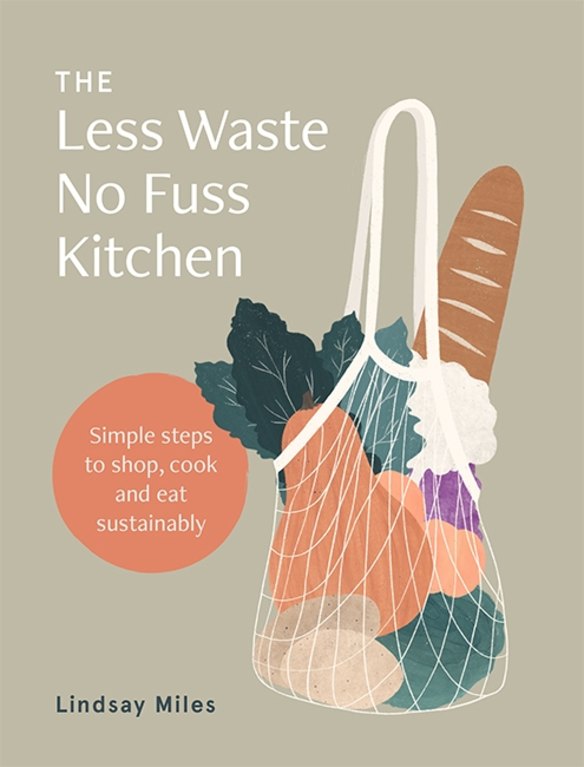
Coriander and cashew pesto
Coriander and cashew pesto has a distinct Thai flavour to it. While most pesto recipes will benefit from adding cheese or nutritional yeast to them, this one will definitely not!
- 1-2 garlic cloves
- 4 large handfuls coriander
- 235g (1½ cups) cashew nuts
- 185ml (¾ cup) macadamia oil (or other flavourless oil)
Chop the garlic, then blend with the coriander to make a paste. Add the cashew nuts and blend again. Finally, add the oil and mix until combined.
The type of nut or seed used can wildly affect the cost of the final pesto. Try your own versions using what's local to you and within your budget.
Pesto is not only for pasta!
- Stir some pesto through cooked, cooled rice (or other grain) to make a pesto salad.
- Use as a dip for crackers or crudites.
- Remove the stalks from closed-cup mushrooms, chop the stalks finely and stir through pesto. Place the mushrooms upside down on a baking tray, fill the cups with a tablespoon of pesto mixture and top with breadcrumbs. Bake in the oven on medium heat for 20 minutes until cooked.
- Spread a thin layer of pesto on toast and top with cooked mushrooms, tomatoes and/or more greens sauteed with garlic.
- Cut some potatoes into cubes, cook (roasted or boiled are both great) and stir through pesto to make a warm potato salad – or leave to cool, and serve chilled.
This is an edited extract from The Less Waste, No Fuss Kitchen by Lindsay Miles published by Hardie Grant Books, RRP $29.99. Buy now.
Appears in these collections
The best recipes from Australia's leading chefs straight to your inbox.
Sign up